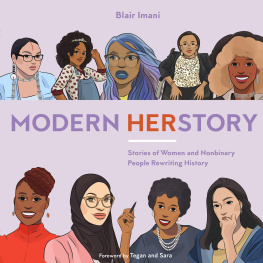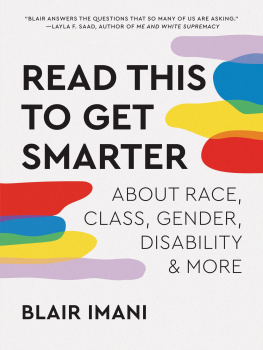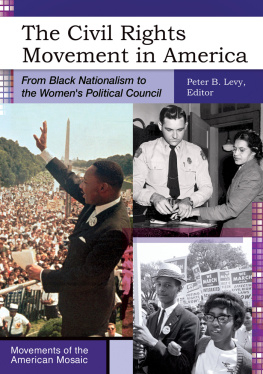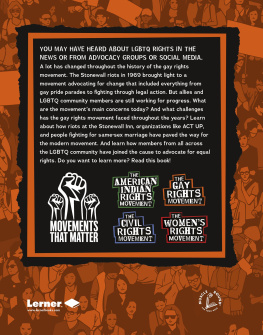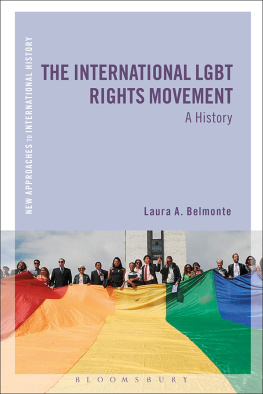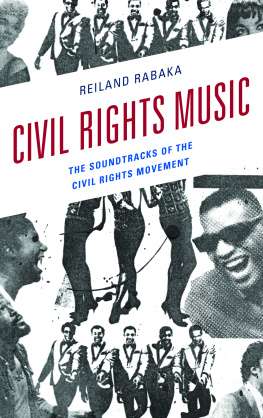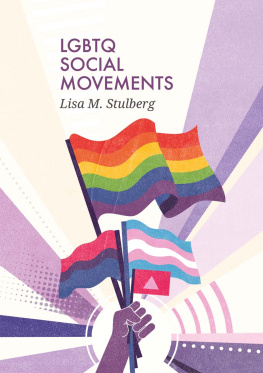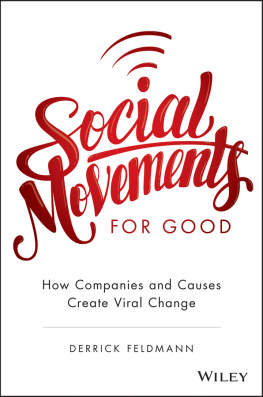Contents
ACKNOWLEDGMENTS
I wouldnt have been able to do the work of researching and writing this book without the support of so many people around me.
To start, I want to thank my many accomplices, for always being there for my many brainstorming sessions, for working one-on-one, and for believing in the project as much as they believed in me:
Monique Le, the amazing illustrator who worked tirelessly on weekends, between classes, and during exam periods to bring these stories to life with her vibrant illustrations. Monique and I first met on Twitter when I was scouting artists for Equality for HERs womens history month program. Within a few months of connecting online we had embarked on the journey that brought this book into your hands. Akeem Muhammad, for helping me stay determined throughout the entire process of creating this book and in my life. Akeem endured hours of excerpt readings as the book transformed into what it is today. Lori Rodriguez, for believing that we could make this book happen before I even believed it myself. Lori came up with the chapter titles and was always there with words of encouragement if I ever got bogged down or overwhelmed (which was often). Glendon Francis, for ensuring that this book got written. Without Glendon, I would still be procrastinating on Twitter or looking for individuals to feature in this text. In middle school, my best friend Bree Wernicke and I would spend recess and weekends making up languages, writing short stories, and enhancing our vocabularies. Bree believed in my ability as an author well before I did, and I am grateful for her constant support. My agent, Greta Moran, for using her genius in the world of publishing to get our book proposal into the hands of every editor and publishing house that would give us the time of day. Thanks to Greta, I had the fortuitous meeting in San Francisco with Ten Speed Press that brought this book to life.
Kaitlin Ketchum, the editor of Modern HERstory and an amazing movement ally, fought valiantly for the mission and message of this book to exist within the predominantly white world of publishing. Thanks to Kaitlin, I was pushed to add more depth and context to this book, enriching the lessons that it provides. Thanks also to Emma Campion, Mari Gill, Anne Goldberg, Serena Sigona, Natalie Mulford, Daniel Wikey, and Windy Dorresteyn at Ten Speed Press for all of their hard work on this book.
I am abundantly grateful for the support of LeVar Burton. Without LeVars tireless advocacy of youth literacy and initiatives like Reading Rainbow, I would not even be able to read. On August 3, 2017, LeVar retweeted one of my posts about Modern HERstory to his two million Twitter followers with the call to action: Somebody publish this womans book! Instantly publishers were eager to read my proposal for Modern HERstory, and this momentum paved the way getting my book into your hands.
I am grateful for the wisdom of my mentors, including Taye Hansberry, Feminista Jones, and Brittany Packnett. When I expressed interest in the world of beauty and fashion, Taye brought me on as an intern and taught me everything I know about digital media communications. When I told Feminista that a publisher wanted to see my book proposaland that I had no clue how to make oneshe stopped everything, called me from her office, and told me how to put a book proposal together. Brittany is the personification of generosityshe has helped me through so much and has opened the door to opportunities I would otherwise never have imagined possible.
Thanks also to Katelyn Burns, Ren Drincic, Fadumo Osman, Fajr DeLane, Dierra Bynum-Reid Shay-Akil McLean, Clarkisha Kent, Anisa Yudawanti, Brittany Witter, and Mariel Limon for helping make Modern HERstory as inclusive as possible.
I am also grateful to my mentors Andrew Walker, Marcus Mason, Andrew Aydin, Dr. Stephen Finley, Van Jones, Bob and Roberta Smith, Dr. Lori Martin, Johua DuBois, DeRay Mckesson, Dawn Laguens, and Sarah Kate Ellis for believing in me throughout my career and for inspiring me to push harder and reach higher.
I am grateful to all of my many, many cousins, and my elders Uncle Craig and Auntie Cyndee, Big Gregory, Little Gregory, Uncle Vernon, Auntie Cynthia, Auntie Marsha, Auntie Karen and Uncle Roby, Uncle Steve and Auntie Debbie, Uncle Terry and Auntie Rita, and Grandpa Nolan.
I am especially grateful for my grandmothers Grandma Eloise, Grandma Marlene, and Grandma Verna Jean. Each of my grandmothers have made history in their lifetimes and helped me be the fiery and confident black woman that I am today.
I want to thank my mother and father for always being ready to enter into a new chapter of my life, no matter what. You raised me to be an understanding and compassionate person, and my upbringing is at the heart of my advocacy today. I know that I often terrify the both of you (especially the first time I got arrested at a protest), but I want to thank you for always jumping into action and getting in the trenches with me. You are the best parents anyone could ask for.
Finally, I appreciate my siblings no end. Nancy, Marlena, Brandon, and Chelsea have each taught me lessons about life for which I am endlessly grateful. I know I am often ridiculous and way too political, but I couldnt have written this book without each of you in my life.
ABOUT THE AUTHOR
BLAIR IMANI
bl-AIR ee-MAH-nee
B lair Imani was born Blair Elizabeth Brown on October 31, 1993, in Los Angeles, California. Blairs dynamic family encouraged her passion for advocacy starting at a young age. As the only black child in her elementary school classes, Blair began to learn about discrimination and prejudice firsthand. In middle school, she became fascinated with the story of her neighbor Dr. Terrence Roberts and his role in integrating schools as one of the Little Rock Nine when he was fifteen. After conducting an interview with Dr. Roberts at the age of twelve, Blair started to understand that she too could make a difference.
At eighteen, Blair left California to begin her studies at Louisiana State University. Blairs activism began with her work on issues of LGBTQ inequality. Taking cues from organizers throughout history, Blair began teaching organizing tactics in the local community. As cases of police violence against unarmed black individuals proliferated across the country, Blair took to social media to maximize her impact as an organizer. In 2013, Blair began to organize mobilizations on Louisiana State Universitys campus.
In 2014, Blair founded Equality for HER , an education resource platform for women and nonbinary people. Through the organization, Blair developed a global network of coalition partners in Nigeria, Pakistan, Australia, Egypt, and in the United States. Working with activists in Muslim-majority countries introduced Blair to the Islamic faith. In 2015, she converted to Islam and changed her name to Blair Imani just prior to graduating from LSU.
To bring attention to the 2016 killing of Alton Sterling by police in Baton Rouge, Blair returned to her college town to support youth activist Myra Richardson as she organized a youth-led march to the Louisiana State Capitol Building. After the march concluded, Blair and community members continued to speak against police violence and the killing of Alton Sterling. That evening, marchers and protesters were confronted by special forces officers and Blair was dragged from where she stood by police, arrested, and held in East Baton Rouge Parish Prison.
Following this pivotal moment, Blair came to be seen as an activist in the public eye and used her new platform to speak out against hate and injustice. In the summer of 2017, she came out as a queer Muslim woman on national television and now works with GLAAD to use her visibility to silence stereotypes. Today, Blair is an author and activist. Find her on social media @blairimani and online at blairimani.com.

